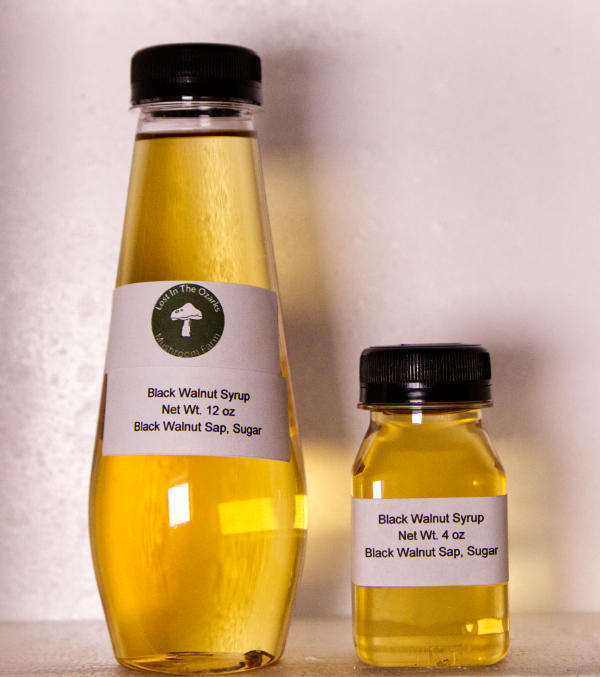
Indulge your taste buds with an enchanting adventure into the realm of wild plant syrups. Discover the bountiful array of edible and nutritious plants thriving in the wild. From delicate elderflowers to vibrant dandelions, we delve into the ancient tradition of harvesting and crafting delectable syrups. Unearth the cultural significance, health benefits, and sustainable practices behind these enchanting elixirs. Sweeten your knowledge and embrace the essence of wild plant syrups today!
History of Plant Syrups
The history of wild plant syrups dates back to ancient civilizations, where indigenous cultures harnessed the power of nature’s sweet bounty for both medicinal and culinary purposes. These natural elixirs were valued not only for their delectable flavor but also for their remarkable health benefits. Ancient records from various regions around the world reveal the diverse applications of wild plant syrups, making them an integral part of traditional medicine and gastronomy.
In ancient Egypt, for instance, the use of wild plant syrups is well-documented. Ingredients such as honey, date palm sap, and various herbs were combined to create potent concoctions believed to cure ailments and boost overall health. These syrupy remedies were revered for their ability to alleviate sore throats, respiratory issues, and digestive troubles. The wisdom of Egyptian healers and herbalists laid the foundation for the continued exploration of wild plant syrups across different cultures.
The Greco-Roman era further enriched the history of wild plant syrups, with renowned physicians like Hippocrates and Galen recognizing their therapeutic potential. They advocated the use of herbal syrups made from ingredients like thyme, mint, and licorice to treat various illnesses. The concoctions were administered as soothing tonics and remedies for colds, coughs, and even as digestive aids. As the knowledge of these herbal formulations spread, they became valued assets in the ancient pharmacopeia.
In the Far East, traditional Chinese medicine incorporated a wide array of wild plant syrups into its vast healing repertoire. The Chinese herbalists skillfully blended extracts from flowers, fruits, and roots with honey or other natural sweeteners. These syrups were valued for their ability to restore energy, balance body systems, and improve overall vitality. The delicate balance between taste and medicinal properties became a hallmark of Chinese botanical preparations.
Throughout history, indigenous communities across the Americas also harnessed the power of wild plant syrups. Native American tribes developed their unique methods of extracting and preserving the essence of wild plants. Syrups made from elderberries, maple sap, and other locally abundant resources became integral to their traditional medicine and culinary practices. These syrups were consumed as immunity boosters, remedies for various ailments, and a delicious addition to meals.
The Renaissance era in Europe witnessed a resurgence of interest in herbal medicine and the revival of ancient knowledge. Herbalists and botanists, such as Nicholas Culpeper, documented the preparation and uses of herbal syrups extensively. These botanical pioneers expanded the range of wild plant species used in syrups, unlocking the potential of many plants for their therapeutic qualities.
As time progressed, the Industrial Revolution brought about changes in food production and consumption habits, leading to a decline in the popularity of wild plant syrups. Mass-produced sugar and artificial sweeteners replaced traditional methods of sweetening, and many herbal remedies were forgotten or lost.
In recent times, there has been a rekindling of interest in wild plant syrups, driven by a growing awareness of the benefits of natural and sustainable practices. Modern herbalists, foragers, and gardeners have rediscovered the wisdom of the past, tapping into the rich tapestry of wild plants for both their culinary and medicinal potential.
Today, wild plant syrups are experiencing a renaissance, with a diverse array of plant species being explored for their unique flavors and health-promoting properties. As we reconnect with nature’s bounty, it is essential to honor traditional knowledge, practice ethical foraging, and embrace sustainable methods to ensure the continued availability of wild plant resources for generations to come. By incorporating wild plant syrups into our daily lives, we not only savor their sweet allure but also revive a rich history that celebrates the gifts of the natural world.
Foraging for Wild Plants
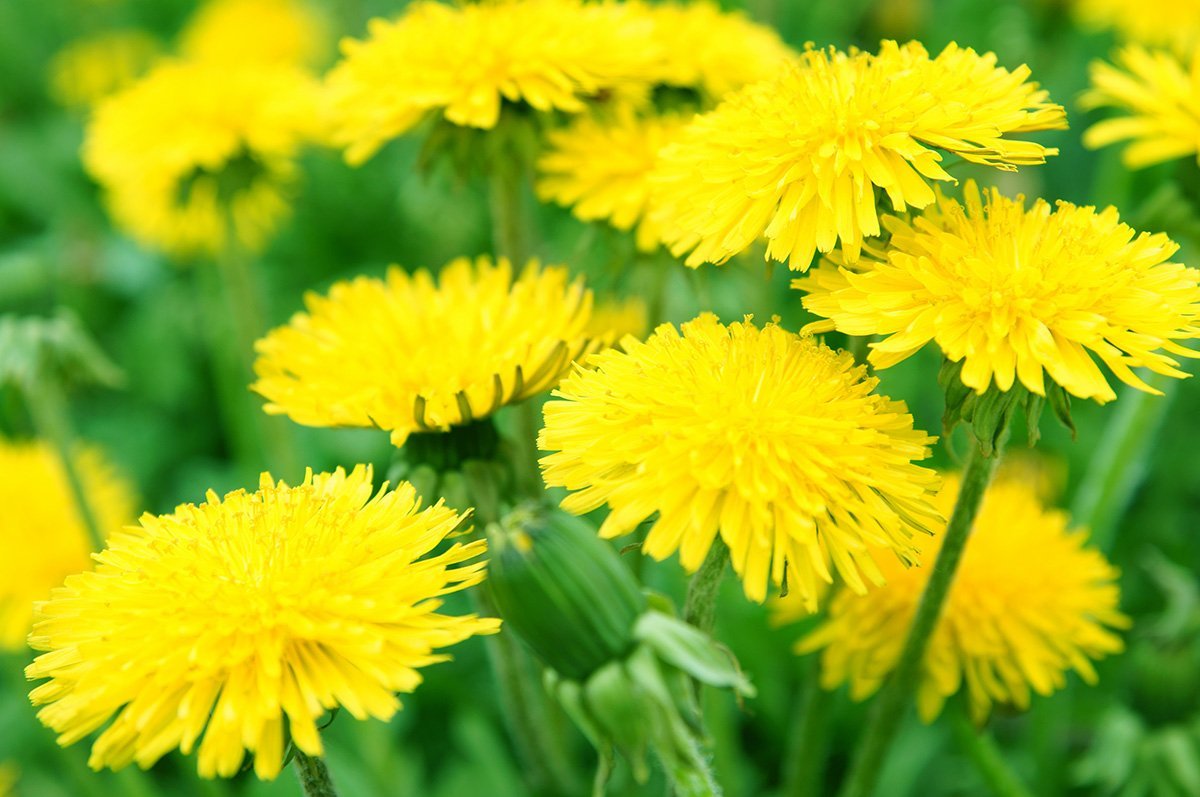
Foraging for wild plants is an ancient practice that involves responsibly gathering edible and medicinal plants from their natural habitats. It is a rewarding and sustainable way to connect with nature while accessing a plethora of flavorful and healthful resources. However, foraging requires knowledge, caution, and a deep respect for the environment to ensure the preservation of wild plant populations.
To begin foraging, it is crucial to acquire a solid understanding of plant identification. Familiarize yourself with the region’s native and non-native plant species, paying particular attention to edible and medicinal varieties. Invest in a field guide, attend workshops, or seek guidance from experienced foragers to sharpen your identification skills and avoid harmful look-alike plants.
Safety should be a top priority during foraging endeavors. Avoid areas that may be contaminated by pesticides, herbicides, or other pollutants. Furthermore, stay away from roadsides and industrial sites where plants may absorb harmful substances. Always forage in clean, unpolluted areas to ensure the purity of the plants you gather.
Adopt ethical foraging practices to protect the delicate balance of ecosystems. Harvest only a small percentage of a plant population, leaving the majority to thrive and propagate. Avoid harvesting rare or endangered species, and never disturb wildlife or their habitats. By foraging responsibly, you contribute to the preservation of biodiversity and the health of the environment.
Timing is crucial when foraging for wild plants. Different species have specific seasons when they are at their peak for harvesting. Learn the optimal time to gather each plant to ensure the best flavor and nutritional value. Additionally, refrain from foraging during times of plant reproduction or when plants are stressed by extreme weather conditions.
Understanding the various parts of the plant that can be harvested is essential. For instance, some plants may offer edible leaves, flowers, fruits, or roots. Properly identifying the suitable plant parts to gather ensures that you utilize the plants to their fullest potential while avoiding unnecessary waste.
Once you’ve collected your wild plant harvest, practice thorough cleaning and processing. Rinse the plants carefully to remove dirt and insects. Be gentle during the cleaning process to preserve the integrity of the plants. Depending on your intended use, you may dry, freeze, or prepare the plants immediately for consumption.
Foraging not only grants you access to unique flavors and textures but also provides an opportunity to incorporate diverse and nutrient-rich ingredients into your diet. However, before consuming any wild plants, ensure that they are indeed edible and safe. Never consume a plant without 100% certainty of its identity and edibility. When in doubt, spit it out!
Incorporate foraged plants into your culinary endeavors with creativity and care. Wild plants can add depth and complexity to dishes, enriching your meals with natural flavors. From salads and soups to teas and syrups, the possibilities are vast.
Embrace foraging as a lifelong journey of discovery and appreciation for the natural world. By respecting the environment, continuously learning about plant species, and using wild plants responsibly, you can enjoy the gifts of nature while contributing to the preservation of our ecological heritage. Foraging for wild plants is not merely an activity; it is a beautiful synergy between humans and the untamed wonders of the earth.
Nutritional Benefits of Wild Plant Syrups
Wild plant syrups offer a plethora of nutritional benefits, making them an attractive alternative to refined sugars and artificial sweeteners. These natural elixirs are crafted from various wild plant species, each brimming with essential vitamins, minerals, and bioactive compounds that support overall health and well-being.
One of the key advantages of wild plant syrups lies in their relatively lower glycemic index compared to refined sugars. This characteristic allows for a slower release of glucose into the bloodstream, preventing rapid spikes and crashes in blood sugar levels. As a result, wild plant syrups can be a more suitable option for individuals managing diabetes or those seeking to maintain steady energy levels.
Many wild plants used in syrup-making are rich sources of antioxidants. These powerful compounds help neutralize free radicals in the body, reducing oxidative stress and inflammation. Antioxidants play a significant role in supporting the immune system, promoting cellular health, and potentially reducing the risk of chronic diseases.
Wild plant syrups often contain an array of essential vitamins and minerals that contribute to overall nutrition. For example, elderberries, a common ingredient in syrups, are packed with vitamin C, which supports immune function and collagen production. Other plants used in syrup-making may offer vitamins A, E, and various B vitamins, each with its unique health benefits.
Certain wild plant syrups are known for their medicinal properties. For instance, elderberry syrup is reputed for its potential to alleviate cold and flu symptoms, thanks to its antiviral and immune-boosting properties. Dandelion syrup is believed to support liver health and aid digestion, making it a valuable addition to your wellness routine.
Wild plant syrups also introduce a diverse range of flavors and aromatic compounds into your diet. These natural flavor profiles can enhance the taste of various dishes and beverages, promoting a more diverse and enjoyable culinary experience. Additionally, wild plant syrups can be used as a healthier alternative to artificial flavorings in commercial products.
When incorporating wild plant syrups into your diet, it is essential to do so in moderation. While they offer numerous nutritional benefits, they still contain natural sugars and should be consumed mindfully. As with any dietary changes or herbal remedies, it is advisable to consult with a healthcare professional, especially if you have underlying health conditions or are pregnant or breastfeeding.
Popular Wild Plant Species for Syrup Making
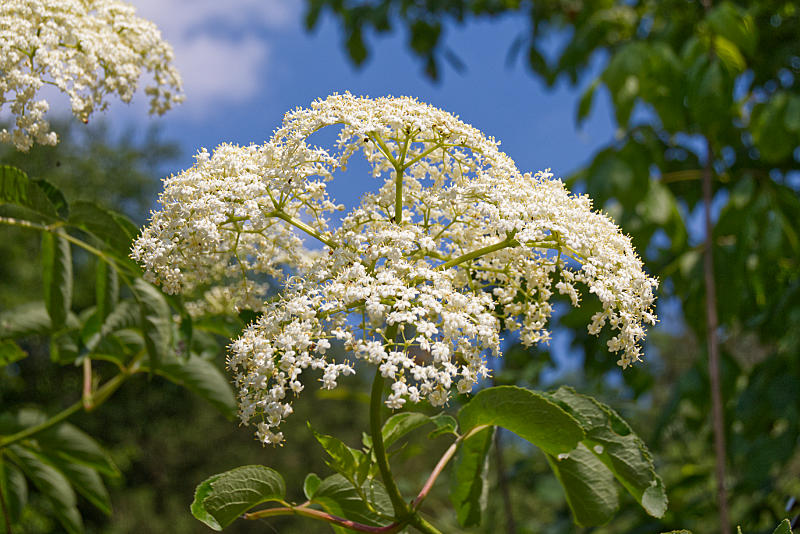
When it comes to creating delectable and healthful wild plant syrups, several popular plant species stand out for their unique flavors and medicinal properties. These plant species have been cherished by foragers, herbalists, and culinary enthusiasts for generations, and their use in syrup-making continues to captivate our taste buds and nourish our bodies.
Elderflowers, from the Sambucus genus, are highly prized for their delicate floral aroma and sweet taste. Elderflower syrup not only adds a delightful twist to beverages and desserts but is also renowned for its potential immune-boosting and anti-inflammatory properties. Rich in antioxidants and vitamin C, elderflower syrup is a delightful way to support your well-being.
Dandelions, commonly found in meadows and lawns, are more than just weeds. Dandelion syrup, made from the vibrant yellow petals, offers a pleasant honey-like flavor. This syrup is believed to promote liver health and aid in digestion, making it a valuable addition to your herbal pantry.
Maple trees, of the Acer genus, provide a classic and beloved wild plant syrup: maple syrup. Although commonly known, its natural sweetness and rich flavor are undeniable. Harvested from the sap of maple trees, this syrup is a versatile sweetener used in pancakes, waffles, and various culinary delights. Rich in essential minerals like manganese and zinc, maple syrup offers more than just a delicious taste.
Roses, from the Rosa genus, have a long history of use in culinary and medicinal applications. Rose syrup, created from the fragrant rose petals, adds a subtle floral essence to beverages, desserts, and even savory dishes. Roses are known for their calming properties, making rose syrup a delightful addition to herbal teas and relaxation rituals.
Blackberries, belonging to the Rubus genus, provide a deep and luscious flavor in syrup making. Blackberry syrup is cherished for its natural sweetness and is often used to drizzle over pancakes, ice creams, and other desserts. Packed with antioxidants, vitamins, and dietary fiber, blackberries offer a nourishing and delightful treat.
Lavender, of the Lavandula genus, is renowned for its enchanting aroma and versatility. Lavender syrup introduces a floral and aromatic profile to culinary creations, including cocktails, lemonades, and baked goods. Lavender is also known for its relaxing and calming effects, making lavender syrup a delightful addition to your evening beverages.
There are a number of other floral wild plants you can use to make syrup. We handcraft small batches of wild plant syrups in season. We offer these syrups in our shop.
Syrup Making With Wild Plants
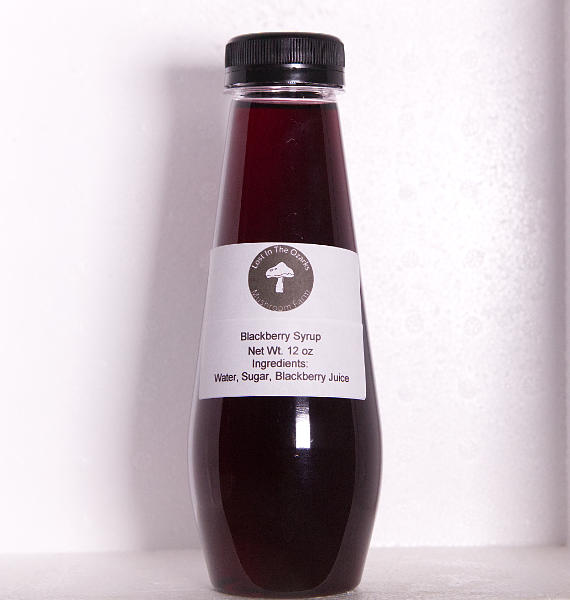
Creating syrup from wild plants opens up a world of delightful flavors and healthful benefits. With a little guidance and creativity, you can turn the bountiful harvest of wild plant species into delicious and versatile syrups to enhance your culinary creations. Here, we will explore the general principles of syrup making and provide you with a simple step-by-step guide to crafting your wild plant syrup.
- Selection of Wild Plants: The first step in syrup making is to choose the wild plant species you wish to work with. Popular choices include elderflowers, dandelions, maple trees, roses, blackberries, and lavender, each offering unique flavors and characteristics. Ensure that you have accurately identified the plant species and that they are safe and edible.
- Harvesting: Once you have selected your wild plants, embark on a responsible harvesting journey. Harvest only from clean and unpolluted areas, avoiding regions treated with pesticides or herbicides. Be mindful of sustainability, leaving a substantial portion of the plant population to thrive and propagate.
- Cleaning and Preparing: Thoroughly clean the harvested plants to remove any dirt, debris, or insects. Use a gentle touch to preserve the quality of the plants. Depending on the species and your intended use, you may need to separate the leaves, flowers, fruits, or roots for syrup making.
- Preparing the Syrup Base: To create the syrup base, you’ll need a natural sweetener such as honey or sugar and water. The ratio of sweetener to water will determine the syrup’s sweetness and consistency. Simmer the sweetener and water over low heat until fully dissolved, creating a simple syrup base for your wild plant infusion.
- Infusion: Gently introduce the cleaned wild plants into the prepared syrup base, allowing their flavors and nutrients to infuse. Adjust the heat as needed to maintain a gentle simmer, and let the mixture steep for an appropriate duration to extract the desired flavors.
- Straining and Storage: After the infusion period, strain the syrup to remove the plant material, leaving you with a smooth and flavorful liquid. Transfer the strained syrup into clean and sterilized containers for storage. Store your wild plant syrups in the refrigerator to prolong their freshness and shelf life.
- Blending Flavors: For those with a taste for adventure, consider blending flavors to create unique and exciting combinations. You can mix different wild plant species or combine them with other natural ingredients like citrus fruits, spices, or herbs to craft customized syrups that suit your preferences.
- Culinary Uses: Wild plant syrups can be a versatile addition to your culinary endeavors. Drizzle them over pancakes, waffles, and desserts for a burst of natural sweetness. Use them to flavor beverages like lemonades, teas, or cocktails. Syrups can also be incorporated into marinades, dressings, and glazes to add complexity to savory dishes.
By following these general principles and experimenting with various wild plant species, you can embark on a delightful journey of wild plant syrup making.
Culinary Uses of Wild Plant Syrups
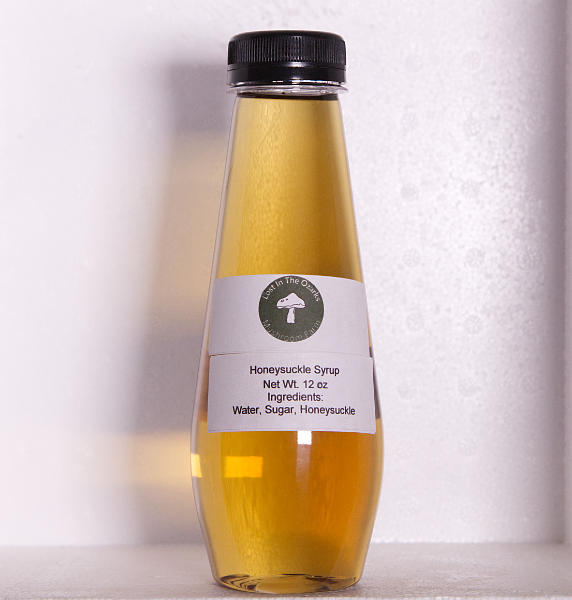
Wild plant syrups offer a delightful and versatile range of applications in the culinary world. Their unique flavors and natural sweetness make them a valuable addition to a variety of dishes and beverages. Let’s explore some of the exciting culinary uses of these exquisite syrups.
- Drizzling over Desserts and Pastries: One of the simplest and most satisfying ways to enjoy wild plant syrups is by drizzling them over desserts and pastries. Whether it’s pancakes, waffles, crepes, ice cream, or cheesecake, wild plant syrups add a burst of natural sweetness and a hint of the plant’s unique flavor. The delicate floral notes of elderflower syrup, the rich earthiness of maple syrup, or the subtle lavender essence can elevate your desserts to a new level of indulgence.
- Flavoring Beverages: Wild plant syrups can lend their enticing flavors to a wide array of beverages. Add a splash of rose syrup to your lemonade for a refreshing floral twist. Create aromatic lavender-infused tea sweetened with lavender syrup for a soothing and relaxing drink. Craft unique cocktails by incorporating wild plant syrups into mixology, infusing your drinks with nature’s bounty.
- Using as a Marinade or Glaze for Meat: Surprisingly, wild plant syrups can be a delightful addition to savory dishes as well. Use them as marinades or glazes for meats like chicken, pork, or lamb. The sweetness of the syrup caramelizes during cooking, imparting a tantalizing layer of flavor that complements the natural taste of the meat.
- Incorporating into Salad Dressings: Infuse your salad dressings with the natural goodness of wild plant syrups. Create vinaigrettes that boast the essence of elderflower, blackberry, or rose, providing a unique and appetizing twist to your salads. The floral and fruity undertones of the syrups blend beautifully with fresh greens and other salad ingredients.
When using wild plant syrups in culinary endeavors, it is essential to strike a balance between the syrup’s sweetness and the overall taste of the dish or beverage. Start with a modest amount of syrup and gradually adjust to suit your preferences. Keep in mind that wild plant syrups are not only a natural sweetener but also a source of distinctive flavors that can enhance your culinary creations.
Health and Wellness Applications
Wild plant syrups have long been valued for their potential health and wellness benefits. These natural elixirs, crafted from various plant species, offer a range of medicinal properties that can support and enhance overall well-being.
- Natural Cough and Cold Remedies: Several wild plant syrups are believed to possess antiviral and immune-boosting properties, making them valuable allies in combating coughs, colds, and respiratory ailments. Elderberry syrup, for instance, has gained popularity for its potential to shorten the duration and severity of cold and flu symptoms. Its abundance of antioxidants and vitamins aids in strengthening the immune system, helping the body fight off infections.
- Soothing Properties for Digestive Health: Certain wild plant syrups, like dandelion and ginger syrup, are renowned for their soothing effects on the digestive system. Dandelion syrup is believed to support liver health and promote bile production, aiding in digestion and detoxification. Ginger syrup, derived from the potent root, can calm digestive discomfort and nausea, making it a valuable natural remedy for gastrointestinal issues.
- Antioxidant and Anti-Inflammatory Benefits: Wild plant syrups are rich in antioxidants, which play a crucial role in neutralizing free radicals and reducing oxidative stress in the body. By doing so, these syrups may contribute to reducing inflammation, a common underlying factor in various chronic diseases. Regular consumption of syrups with antioxidant properties can support overall health and potentially lower the risk of certain illnesses.
- Calming and Relaxing Effects: Some wild plant syrups, like lavender and chamomile syrup, are known for their calming and relaxing effects. These syrups can be incorporated into bedtime rituals or consumed in teas to promote restful sleep and alleviate stress and anxiety.
- Nutrient-Rich Supplements: Wild plant syrups often contain essential vitamins, minerals, and bioactive compounds, providing a natural and nutrient-rich supplement to your diet. For example, elderflower syrup is packed with vitamin C, while maple syrup offers essential minerals like manganese and zinc. By adding these syrups to your meals or beverages, you introduce a range of healthful nutrients into your daily routine.
As with any herbal remedy or dietary supplement, it is crucial to approach wild plant syrups with caution and consult with a healthcare professional, especially if you have underlying health conditions, or allergies, or are pregnant or breastfeeding. While these syrups offer a range of potential health benefits, individual responses can vary, and it is essential to ensure their safety and suitability for your specific circumstances.
Cautionary Notes and Potential Risks
While wild plant syrups offer a wide range of flavors and potential health benefits, it is essential to approach their usage with caution and awareness of potential risks. As with any natural product, there are certain considerations and factors to keep in mind to ensure safety and well-being.
- Accurate Plant Identification: Accurate plant identification is paramount when foraging or using wild plants for syrup making. Misidentifying a plant can lead to serious health consequences, as some wild plants may be toxic or harmful when consumed. If you are uncertain about a plant’s identity, seek guidance from an experienced forager, herbalist, or botanist.
- Allergic Reactions and Sensitivities: Individuals may have allergies or sensitivities to specific wild plant species. Before incorporating wild plant syrups into your diet, especially if you have known allergies or sensitivities to certain plants, it is advisable to conduct a patch test or consult with a healthcare professional.
- Contaminants and Pollution: Wild plants can absorb pollutants, chemicals, or heavy metals from their surroundings. Avoid harvesting plants from areas exposed to pesticides, herbicides, or industrial pollutants. Foraged plants from roadsides or areas with high pollution levels should be avoided to ensure the purity of the plants used in syrup making.
- Proper Processing and Handling: Careful processing and handling of wild plants are crucial to maintaining the quality and safety of the syrup. Ensure thorough cleaning to remove dirt and potential contaminants. Sterilize equipment and containers used in syrup preparation to prevent contamination.
- Sustainability and Ethical Foraging: Overharvesting wild plants can lead to the depletion of plant populations and disrupt local ecosystems. Practice ethical foraging by harvesting only a small percentage of a plant population, leaving the majority to thrive and reproduce. Respect natural habitats and refrain from foraging in protected areas or areas with endangered plant species.
- Interactions with Medications and Health Conditions: Some wild plant syrups may interact with medications or exacerbate certain health conditions. If you are taking medications or have existing health concerns, consult with a healthcare professional before using wild plant syrups to ensure they are safe for you.
- Pregnancy and Breastfeeding: Pregnant or breastfeeding individuals should exercise caution when consuming wild plant syrups. Some plants may have contraindications during pregnancy or lactation. Consult with a qualified healthcare provider before incorporating wild plant syrups into your diet during these periods.
By approaching wild plant syrups with attentiveness, proper research, and care, you can enjoy their unique flavors and potential health benefits while minimizing potential risks. Educate yourself about the wild plant species used, practice responsible foraging, and consult with healthcare professionals when needed. Embracing a cautious and informed approach ensures that you can fully savor the gifts of nature while safeguarding your well-being.
Conclusion
Wild plant syrups offer a captivating journey into the world of natural flavors and potential health benefits. From the delicate essence of elderflowers to the rich sweetness of maple, these syrups are crafted with care and respect for the bountiful offerings of nature. Their versatility in culinary applications, along with their potential medicinal properties, make them a delightful addition to any kitchen and wellness routine.
As we explore the history, nutritional benefits, culinary uses, and health considerations of wild plant syrups, we embrace the wisdom of ancient traditions and the richness of our natural heritage. However, it is essential to approach wild plant syrups with caution and respect, ensuring accurate plant identification, ethical foraging practices, and consideration of potential risks.
By incorporating wild plant syrups into our lives, we not only indulge in delicious and unique flavors but also connect with the profound symbiosis between humans and the untamed wonders of the earth. As we savor each drop of these exquisite syrups, we celebrate the gifts of the natural world and embark on a journey of holistic nourishment and appreciation for the wonders of wild plants. Let us cherish this timeless tradition and embrace the essence of wild plant syrups to enrich our culinary delights and enhance our well-being, always with gratitude for the abundance that nature graciously provides.
Be sure and check out our article on making Black Walnut Syrup.
We offer an array of wild plant syrups in our online shop.
Be sure and visit our list of articles for more great info on sustainable living, as well as edible and medicinal plants.
FAQs:
Q: What plant is used as a syrup?
A: Various plants are used to make syrups, but some popular choices include elderflowers, dandelions, maple trees (for maple syrup), roses, blackberries, and lavender. Each plant offers unique flavors and potential health benefits.
Q: How long does homemade syrup last?
A: The shelf life of homemade syrup depends on the ingredients used and how it is stored. Generally, homemade syrups made from wild plants can last for several weeks to a few months when stored in the refrigerator. It is essential to check for any signs of spoilage, such as mold or off-odors, before consuming.
Q: What other trees can make syrup?
A: Apart from maple trees, other trees that can produce syrup include birch trees (birch syrup), black walnut trees (black walnut syrup), and hickory trees (hickory syrup). These syrups offer distinct flavors and are popular in certain regions for culinary applications.
Q: What tree makes the best syrup?
A: Maple trees are widely regarded as making the best syrup due to their high sugar content and favorable taste profile. Maple syrup is a staple in many households and is commonly used in various culinary creations.
Q: What makes syrup go bad?
A: Syrup can go bad due to microbial contamination, exposure to air and moisture, and improper storage. Mold, yeast, or bacteria can grow in the syrup if it is not adequately preserved or kept in unsanitary conditions.
Q: How do you preserve syrup naturally?
A: To preserve syrup naturally, it is essential to use clean and sterilized containers, keep the syrup away from direct sunlight and heat, and store it in a cool and dry place. Natural preservatives like honey or high sugar content can also help extend the shelf life of syrups.
Q: How do you keep homemade syrup from hardening?
A: To prevent homemade syrup from hardening, store it in a tightly sealed container to minimize exposure to air. If the syrup starts to crystallize or harden, gently heating it on low heat or using a warm water bath can help to liquefy it again.
Q: How do you preserve herbal syrup?
A: To preserve herbal syrup, it is essential to follow proper processing and sterilization procedures during preparation. Store herbal syrups in clean and airtight containers, and keep them in the refrigerator to maintain freshness and prevent spoilage.
Q: How to prepare simple syrups?
A: To prepare simple syrups, combine equal parts of sugar and water in a saucepan, and heat over low heat until the sugar dissolves completely. Allow the syrup to cool before transferring it to a clean container for storage.
Q: How do you make herbal syrup shelf stable?
A: To make herbal syrup shelf-stable, you can add natural preservatives like alcohol (such as vodka) or apple cider vinegar to the syrup during preparation. These ingredients help inhibit the growth of bacteria and mold, extending the syrup’s shelf life. Additionally, proper sterilization and storage techniques are essential for maintaining shelf stability.